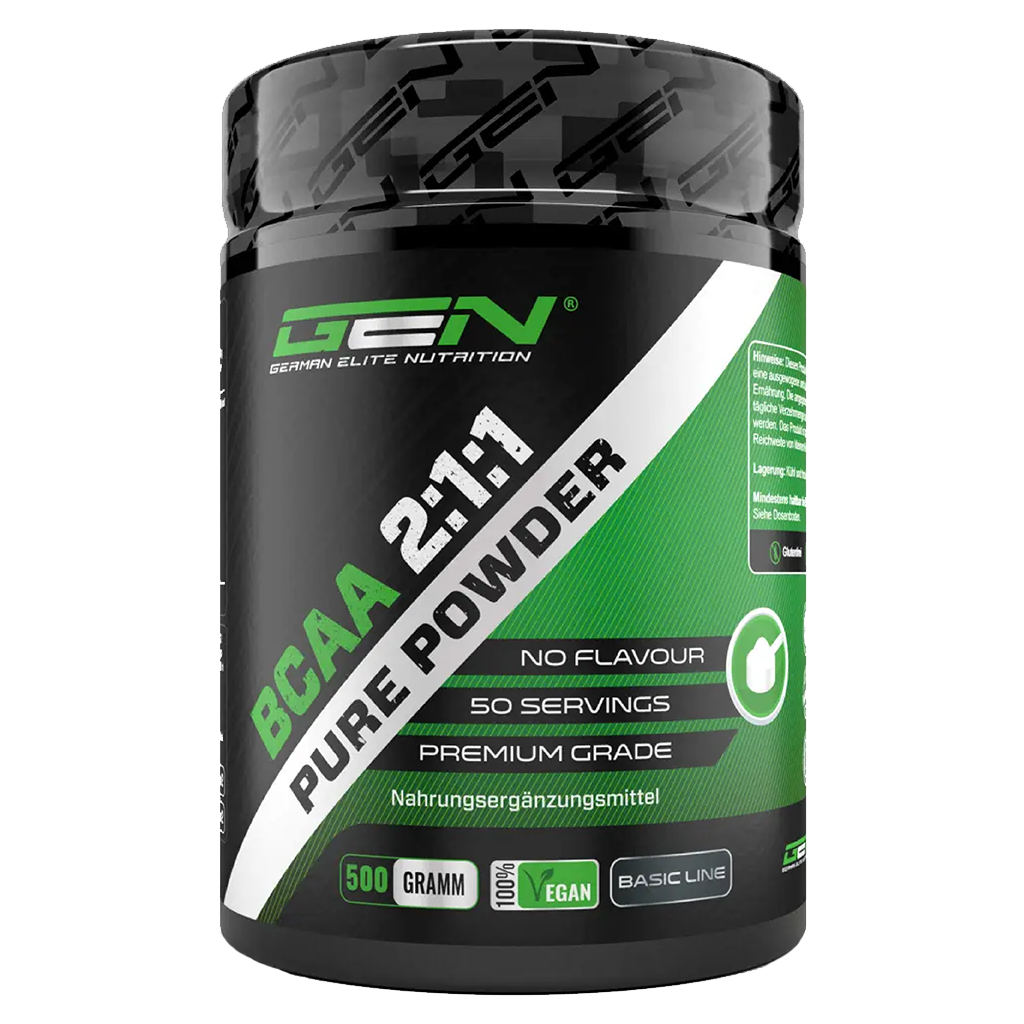- why the amino acids in EAA and BCAA are elementary for you are.
- which essential amino acids in EAA can be found.
- how you can benefit from BCAA intake can benefit.
- whether you EAA or BCAA for strength and endurance sports. you should take.
- why the selection depends on the dietary habits depends.
- which amino acids are recommended for beginners and advanced are recommended.
- what the experts say about EAA and BCAA says.
- with which testing possibilities you find the right amino acids for you.
- whether it is possible, EAA and BCAA at the same time to take.
The Basics: Why EAA and BCAA are indispensable for your training
EAA and BCAA are both complexes of essential amino acidswhich our body cannot produce itself. In total, humans need eight essential amino acids. They are mainly found in animal, but also in vegetable protein-rich foods and must be must be ingested with food. In addition to the essential amino acids, the semi-essential amino acids that the body can form itself are also important.
If the organism lacks certain amino acids over a longer period of time, deficiency symptoms such as muscle weakness 1 may develop. The same can happen if you exercise too intensively with insufficient nutrition. With the sufficient supply of essential amino acids you can compensate for such nutritional deficiencies.EAAs: The essential amino acids for your body
EAAs (Essential Amino Acids) consist of eight essential amino acids that the human body cannot produce itself. For this reason, we must take these essential protein building blocks through protein-rich food or as a dietary supplement. In EAAs are all eight essential amino acids contain
- Valine
- Leucine
- Isoleucine
- Lysine
- Methionine
- Phenylalanine
- Tryptophan
- Threonine
BCAAs: How it supports your body and muscles
BCAAs (Branched-chain Amino Acids) are branched-chain amino acids. They consist of three of the essential amino acidswhich are also contained in EAAs:
- Valine
- Leucine
- Isoleucine
EAAs vs. BCAAs: Which amino acids deliver the better results?
Which of the two amino acid complexes performs best cannot be answered unequivocally at the moment, because there are good reasons for taking EAA and BCAA, which we now reveal to you:
Strength or endurance workout: What do you need for which workout?
You are active in strength or endurance sports and wonder whether you should better take EAAs or BCAAs? In weight training we recommend the intake of EAAsbecause this complex contains all eight essential amino acids. At Endurance sports or cardio training it may be sufficient if you rely on the amino acids contained in BCAAs contained in amino acids. However, this recommendation is not set in stone. Just try out what you think suits you best.
How your diet can influence the choice between BCAAs and EAAs
As an athlete, you certainly pay attention to the right amino acids in your diet. Nevertheless, the supply of BCAAs can be useful for you - especially if you train intensively. The situation is somewhat different if your intake of essential amino acids is too low, e.g. as part of an unbalanced diet with little protein or during a diet. In this case, EAAs can be better for you, because they contain all eight essential amino acids that your body needs.
From beginner to advanced: Which amino acids suit your training level?
You are beginner or do you do moderate sports? If you eat a protein-rich and balanced diet, you probably consume enough essential amino acids with your food and can benefit additionally from a BCAA-intake. If you are one of the advanced or competitive athletes and train intensively, you may have a slightly increased need for amino acids. Here you may benefit from EAA supplementation with the eight essential amino acids may be can be useful for you. With this you are on the safe side to supply your body with the essential protein building blocks.
BCAAs or EAAs: This is the subject of debate among experts
The experts are not quite agreed on whether BCAAs or EAAs are better. While mainly BCAAs have been "on everyone's lips" among athletes so far, a trend shift towards EAAs can currently be observed among many of them. Some experts assume that the supplied amino acid composition should be similar to the body's own. With the supply of BCAAs, which contains three of the eight essential amino acids, this endogenous balance could possibly shift. However, BCAA supplementation may be advisable and provide important protein building blocks, for example, if you are currently on a hypercaloric low-protein diet.
Take the test: Which amino acids help you achieve your goals?
You want to know whether taking EAAs or BCAAs is better for you? These two test options can bring you clarity:
Track your progress: measuring success when choosing BCAAs and EAAs
By trying and comparing the two amino acid complexes, you can easily test which one suits you and your training goals best. Supplement BCAAs and EAAs under the same conditions over a set period of time and you'll quickly see which product brings you closest to your goals.
How useful are lab tests to find the optimal amino acid blend?
Meanwhile, many laboratories offer a blood test (aminogram) to order on the Internet. You receive a test kit with which you take a small blood sample from your finger and send it to the laboratory. The analysis shows you how high the concentration of amino acids is in your blood. This way you can find out whether BCAA or EAA supplementation is better for you. Alternatively, you can have the aminogram performed by specialized doctors or in testing centers as a private service. Note, however, that this is a costly affair.
Can BCAAs and EAAs be combined?
Some athletes take EAAs and BCAAs in combination. If you decide to do so, you should take EAAs on non-training days and BCAAs immediately before or after your workout.
More articles on the topic

Mass Phase and Definition Phase: Our Guide to Your Success
You are a real gym freak and love to steel your muscles in the gym or at home? As you already know, you can in the mass phase

Are extreme diets useful?
Surely everyone who has already gone through one or more diets or is planning to, knows this "phenomenon". You want to start a diet, but you know

Myth: Are low-fat products really healthy?
When it comes to a defined body, low-fat products are high on the trend and making their way into the refrigerator of many fitness devotees. But how healthy are
Sources:
1 Christian Löser, Jann Arends: malnutrition and undernutrition clinic - modern therapeutic strategies - budget relevance ; 81 tables. 1st ed. Stuttgart 2011, ISBN 978-3-13-154101-7.
2 Christian Löser, Jann Arends: Malnutrition and undernutrition clinic - modern therapeutic strategies - budget relevance ; 81 tables.. 1st ed. Stuttgart 2011, ISBN 978-3-13-154101-7.
















